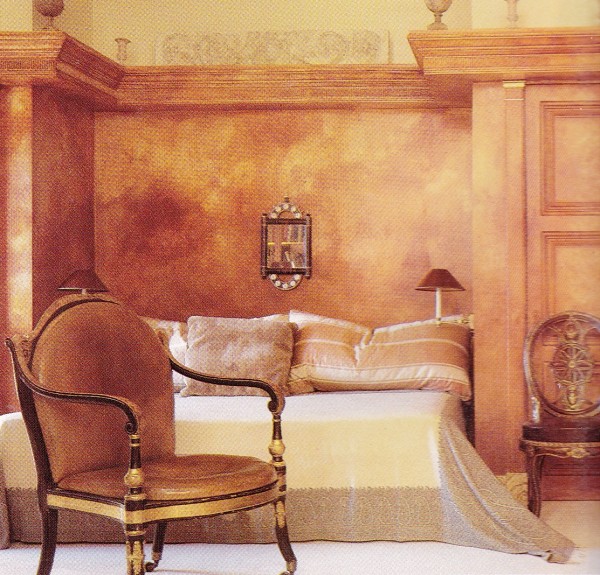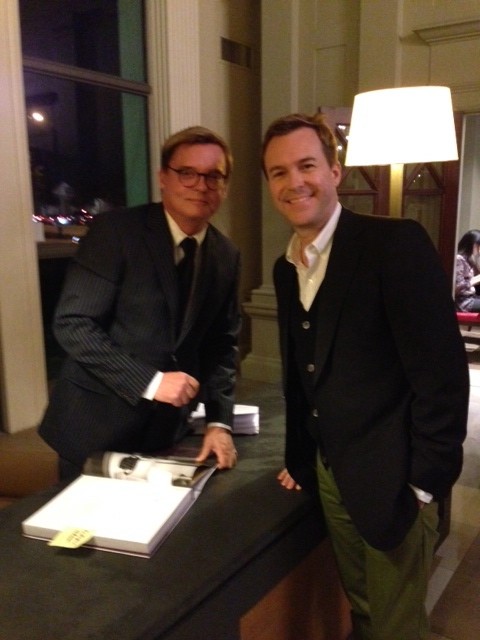Stephen Sills, that is – the classically-inspired interior designer with an American point of view. Sir Sills is the decorator’s decorator, the one that can’t be copied with any success. Have you ever tried to copy a Rothko or a Pollack? I have, with disastrous results. Yes, it’s true, be yourself. It’s your only fate. But, oh, how I wish I could channel the alchemical magic conjured by this one truly extraordinary talent, a sublime gift to the world of interiors.
Too flowery you say? Au contraire! Not for this Stephen Sills groupie. (For anyone who doesn’t know me, I am not the groupie type.) The rooms featured in today’s post were the first rooms designed by Sills to be published. House & Garden featured his Dallas townhouse in 1986 with the headline “Classical Trickery: Designer Stephen Sills Gives a Modern Clarity to Traditional Tromp l”Oeil.” By the time the issue hit circulation Sills’s career had skyrocketed and would find him decamped to New York City. The rest is history in the making.
I am perplexed, actually, that these rooms have not circulated the interior design lover’s blogoshere. Could it be that they are too theatrical for our modern way of living? From what I find on Pinterest, for example, our love of theater has not waned. Aside from the elaborate plaster casts mimicking the drapery of classic Greek sculpture these aren’t rooms dripping with opulence in the vein of le goût Rothschild, a style so out of reach for so many. Admittedly, I have always been a sucker for a marble fragment or two, and for the order, proportion and scale of the Classics, and its inherent sense of refinement and simplicity, the mark of true elegance. And I somewhat wish that we might return, if just a bit, to creating more rooms with stage presence, romance, fantasy and a touch of magic. I have returned to these images time and time again over the years for inspiration and delight. Stephen Sills has been a silent mentor from the start and I will continue to be his loyal disciple, as I told him myself with utmost gratitude and sincerity.
The Eye Has to Travel by Diana Vreeland comes to mind as I experience these rooms. Sills’s early travels abroad and his years spent in Paris surely influenced his taste for antiquities and the Romantic-Classical Revival styles of the 18th-and-19th-centuries. The loose arrangement of floating Louis XVI chairs by François Hervé covered in cobalt blue satin (from Chatsworth) is reminiscent of the Rothchild’s drawing room at Château Mouton photographed by Horst. But, here, where bona fide antiques mix with a virtuoso of faux , Sills had created an atmosphere more akin to a Federico Fellini film. Plaster-coated draped muslin provides a faux-stone backdrop for Roman antiquities and period Louis XVI furniture floating on cool white marble tile floors, all beneath a shimmering silver tea-papered ceiling. A remarkable 18th-century Irish mirror injects a note of Rococo whimsy atop a quite handsome low and broad mantel of plaster that melds seamlessly with the walls.
Sills enhanced the sense of illusion that pervades much of the townhouse by extending the interior wall color onto the terrace beyond floor-to-ceiling windows that read like mirrors reflecting back. Even the blue glass cube table in the living area that brings to mind a Donald Judd art work is repeated on the terrace, as if a reflection. A spare elegance and restrained palette allows the important pieces to take center stage, giving these rooms the appearance of an 18th-century Italian villa.
Faux was the word in the lexicon of designers and decorators of the 1980’s and 1990’s. Here, Sills used it to great effect using Brunschwig & Fils wallpaper cut to imitate stone and pasted onto a “mortar” of another brown wallpaper. He played up the verticality of the entry hall by placing an elongated and narrow 18th-century Irish mirror above a parchment cabinet by Jean-Michel Frank and stacked Islamic tiles over a French Deco console.
A monastic serenity pervades the entry hall, like stepping back in time to another era in a different place. The celestial mobile floating above the stairs strikes a note of mystery and illusion. The Italian oval-back chair now resides at his Bedford home.
In the library Sills intended the faux finish for the walls to resemble terra-cotta but he arrived at something that resembled leather and stuck with it. A French Art Deco mirror with a tarnished Korean lacquer frame appears to float beyond the space, suspended on a wall of the entry hall beyond.
The illusory quality of the burnished faux leather tromp l’oeil walls compliments the bona fide leather upholstered neoclassical Italian chairs creating a rich Old World atmosphere.
From House & Garden, June 1986. Photography by Oberto Gilli.
Thank you, Stephen, for conjuring a world of magic, elegance and timeless chic that will inspire and delight for years to come.
(This post was written in November of 2013. I thought I had published it but recently discovered it was still a draft. My apologies to Stephen and audience!)
To experience more of Stephen Sills’s beautifully rendered world you can buy Stephen Sills: Decoration HERE.























Love his style and this home… and your picture with him…what a great post.
Thank you
Victoria
Thank you, Victoria – When I discovered Stephen Sills many years ago I knew, even at a young age, I had discovered someone with a fine-tuned sensibility and an innate gift for creating sublime atmosphere. After Michael Taylor he became the truest personification of style and chic for me, a “silent” mentor across the miles.
CW